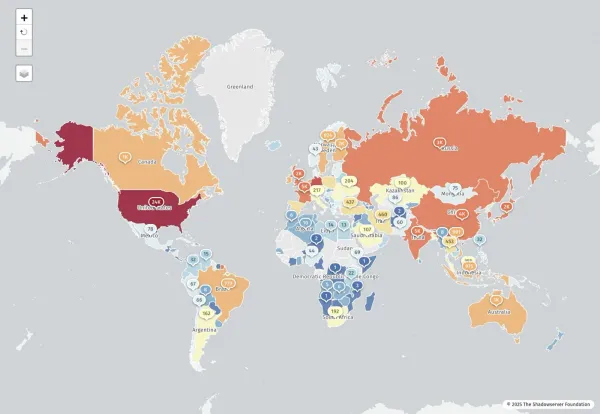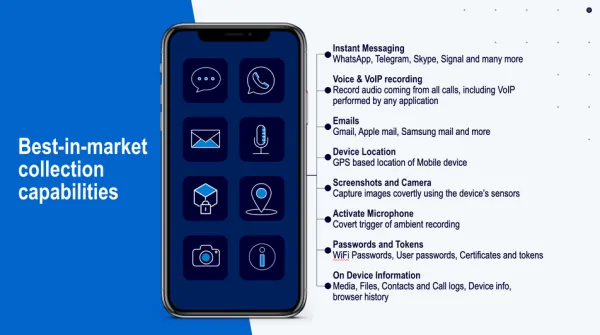Luxury Brands Under Siege: The Growing Cyber Threat to High-End Retail

The luxury fashion industry, once considered insulated from the digital vulnerabilities plaguing mainstream retail, is now facing an unprecedented wave of sophisticated cyber attacks. Two major incidents in 2025 have exposed the sector's alarming security gaps, with Louis Vuitton and Dior both falling victim to devastating data breaches that compromised hundreds of thousands of customer records globally.

Louis Vuitton: A Multi-Country Cyber Catastrophe
In what security experts are calling one of the most significant luxury retail breaches in recent memory, Louis Vuitton confirmed in July 2025 that it had suffered a coordinated cyber attack affecting customers across multiple countries. The luxury fashion giant confirmed that breaches impacting customers in the UK, South Korea, and Turkey stem from the same security incident, which is believed to be linked to the ShinyHunters extortion group.
The luxury retailer confirmed that unauthorized threat actors successfully infiltrated their network infrastructure on July 2, 2025, resulting in the exfiltration of customer personal identifiable information (PII), including names, contact details, and purchase transaction histories. The scope of the breach has continued to expand as the company investigates, with Australia and Hong Kong also confirming their customers were affected.
The Scale of the Damage
The breadth of data compromised in the Louis Vuitton attack is particularly concerning. Leaked information included names, passport details, addresses and email addresses as well as phone numbers, making this breach especially sensitive given the high-profile nature of many luxury customers. Hong Kong's privacy regulator investigates Louis Vuitton data breach affecting 419,000 customers. Personal data stolen including passports.

The inclusion of passport details represents a significant escalation in the type of sensitive information being targeted in luxury retail attacks. This level of personal data exposure goes far beyond typical e-commerce breaches and raises serious concerns about identity theft and fraud potential for affected customers.
International Response and Investigation
The international scope of the Louis Vuitton breach has prompted regulatory responses across multiple jurisdictions. Hong Kong's privacy regulator has launched a formal investigation, while customers in affected countries are being advised to monitor their accounts for suspicious activity. Following the cyberattack, Louis Vuitton advised clients to watch for suspicious emails and calls, even though no financial details were accessed.
Dior: Another LVMH Brand Falls Victim
Just months before the Louis Vuitton incident, another major LVMH luxury brand suffered its own significant breach. Major French luxury fashion retailer Dior has confirmed the compromise of U.S. clients' data following a data breach in late January, and French luxury giant Dior suffered a cyber attack that resulted in a data breach in numerous countries after unauthorized individuals accessed its information systems.
The Dior breach, discovered in May 2025 but dating back to an intrusion in January, demonstrates the sophisticated nature of these attacks and the extended time periods hackers can remain undetected within luxury brand systems. Dior believes that hackers only accessed the information on January 26th, and they never returned for more. Dior was hacked on January 26th, 2025, and the breach was discovered in May 2025.
Expanding Target List
The attacks haven't stopped with Louis Vuitton and Dior. Tiffany & Co. has confirmed a data breach affecting customers in South Korea, marking the second such incident involving an LVMH Moët Hennessy Louis Vuitton brand after a similar case at Dior. Additionally, Cartier disclosed a data breach exposing customer names, emails, and countries after a cyberattack. No passwords or payment info were compromised, but this adds to a growing trend of luxury brands falling victim to cyber threats.

Why Luxury Brands Are Prime Targets
The targeting of luxury brands represents a strategic shift by cybercriminals toward high-value victims. These companies maintain extensive databases of wealthy customers whose personal information commands premium prices on dark web markets. The combination of valuable customer data, often outdated security infrastructure, and the discretionary nature of luxury purchases makes these brands particularly attractive to cybercriminal organizations.
The 2024 data breach at Louis Vuitton Korea, which exposed sensitive customer data, marks a turning point for the luxury retail sector. This incident—part of a wave of attacks targeting brands like Dior, Tiffany, and Cartier—has laid bare systemic vulnerabilities in the industry's digital infrastructure.
The ShinyHunters Connection
Security researchers have linked several of these attacks to the ShinyHunters extortion group, a sophisticated cybercriminal organization known for targeting high-profile brands and demanding significant ransoms. The group's involvement suggests these aren't opportunistic attacks but rather carefully planned operations designed to maximize both data value and extortion potential.
The coordinated nature of these attacks across multiple LVMH brands raises questions about whether the parent company's shared infrastructure or vendor relationships may have provided attack vectors that criminals exploited across the portfolio.

Industry-Wide Implications
The luxury fashion industry now faces a critical inflection point regarding cybersecurity investment. Traditional approaches to digital security, often viewed as secondary concerns for brands focused primarily on craftsmanship and heritage, are proving inadequate against modern cyber threats.
The exposure of passport details, purchase histories, and personal preferences of high-net-worth individuals creates risks that extend far beyond typical data breaches. The compromised information could enable sophisticated social engineering attacks, identity theft, and targeted fraud schemes against some of the world's wealthiest consumers.
The Path Forward
These incidents serve as a wake-up call for the entire luxury retail sector. Companies must rapidly modernize their cybersecurity infrastructure, implement comprehensive data protection protocols, and establish robust incident response capabilities. The cost of prevention, while significant, pales in comparison to the reputational damage and regulatory penalties resulting from major breaches.
As luxury brands increasingly embrace digital transformation and e-commerce expansion, cybersecurity can no longer be treated as an afterthought. The industry's most valuable asset—the trust and discretion expected by ultra-high-net-worth customers—depends on their ability to protect the sensitive personal information these clients entrust to them.
The attacks on Louis Vuitton, Dior, and other luxury brands represent more than isolated security incidents; they signal a fundamental shift in the cyber threat landscape that will require equally fundamental changes in how the luxury industry approaches digital security.










